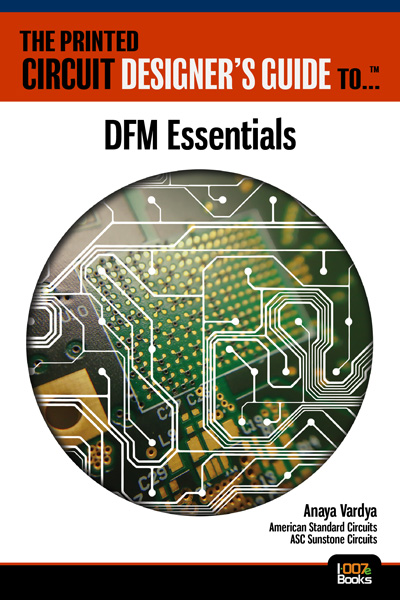High-frequency EMC Noise in DC Circuits
May 29, 2025 | Karen Burnham, EMC UnitedEstimated reading time: 1 minute
EMC isn’t black magic, but it’s easy to understand why it seems that way. When looking at a schematic like that in Figure 1, it looks like you’re only dealing with DC signals all across the board. There’s a 28 VDC input that goes through an EMI filter, then gets converted to 12 VDC power. Except in extremely rare circumstances involving equipment sensitive to magnetostatic fields, DC electricity will never be part of an EMC problem.
Figure 1: Power conversion stage of avionics unit
Harmonics
The biggest problem occurs when you use a switching operation to convert power from one form to another—something most modern electronics do all the time. For power and thermal efficiency reasons, we want switching waveforms to get as close to a perfect square wave as possible—the faster the rise and fall time, the less loss and heating you have in the operation. The problem is that there’s a trade-off: Faster rise and fall times necessarily generate high-frequency electrical signals. Then, if provisions aren’t made for controlling the high-frequency noise signals, they can escape to cause signal integrity and EMC problems throughout the board and system.
Let’s illustrate this with a simple function generator. The beginning setting is a 5 VDC square wave switching at 20 MHz—something you might see from a board’s clock signal. In Figure 2, we see a cable connected to the function generator channel 1 output. That’s the default cable that came with the function generator, with current being run through a 50 Ω resistor between the red and black leads.
To read the entire article, which originally appeared in the May 2025 issue of Design007 Magazine, click here.
Testimonial
"The I-Connect007 team is outstanding—kind, responsive, and a true marketing partner. Their design team created fresh, eye-catching ads, and their editorial support polished our content to let our brand shine. Thank you all! "
Sweeney Ng - CEE PCBSuggested Items
Delta to Acquire Noda RF Technologies to Enhance its Power Solutions Portfolio for the Semiconductor Industry
10/30/2025 | PRNewswireDelta Electronics, Inc., a leader in power management and smart green solutions, today announced the acquisition of 90.23% stake of Japan's Noda RF Technologies Co., Ltd. (NRF) through its subsidiary Delta Electronics (Netherlands) B.V. for JPY 5,024 million (approximately NT$1,034 million).
Designers Notebook: Power and Ground Distribution Basics
10/29/2025 | Vern Solberg -- Column: Designer's NotebookThe principal objectives to be established during the planning stage are to define the interrelationship between all component elements and confirm that there is sufficient surface area for placement, the space needed to ensure efficient circuit interconnect, and to accommodate adequate power and ground distribution.
Elementary, Mr. Watson: Heat—The Hidden Villain of Power Electronics
10/28/2025 | John Watson -- Column: Elementary, Mr. WatsonIf electricity were a group of college students, then power electronics and the PCB designers who dive into it would insist on driving the car on every road trip because they know the car inside and out—they’re the students with jumper cables in the trunk, a tire pressure gauge in the glove box, and snacks stashed under the seat. While the others argue over playlists and directions, power electronics is busy ensuring the alternator doesn’t fry, the headlights don’t dim, and everyone reaches the destination with fuel still in the tank.
Infineon to Purchase Long-Term Green Electricity from Wind Farms in Brandenburg, Germany and Solar Plants in Spain
10/27/2025 | InfineonInfineon Technologies AG has concluded Power Purchase Agreements (PPA) with PNE AG and Statkraft for green electricity.
I-Connect007 Editor’s Choice: Five Must-Reads for the Week
10/24/2025 | Andy Shaughnessy, I-Connect007This week, we have quite a bit of international content in this week’s list of must-reads. Nothing happens in a vacuum, including electronics manufacturing and design, and this has been quite an eventful year. How many of us are now tariff experts? I’m certainly not, but that hasn’t stopped me from opining about the situation.


